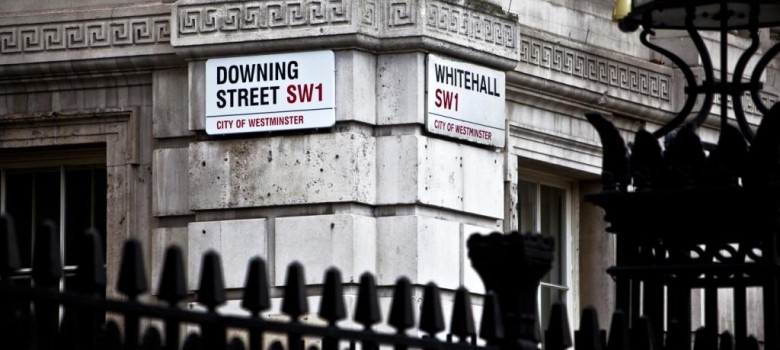
The roadmap for the UK Budget for 2012/13 was set out Wednesday by the Chancellor, George Osborne, but what does it mean for our Green Sector and Cleantech in the UK?
In 2010, PM David Cameron, pledged that this government would be the ‘greenest ever’. This year’s budget seemed concerned (rightly so) with measures to stabilise the deficit and shore up general industrial growth (green or not) for the UK economy. How then did Mr Osborne and Mr Cameron seek to power this growth?
It seems that the Chancellor has opted to go for tried and tested hydrocarbon technologies as opposed to newer industrial renewables.
Over the next few years, and certainly by the end of this decade, several of UK’s nuclear power stations are going to be decommissioned, and therefore, other sources of electricity need to be introduced to take up the slack in energy production (just ask Sir David King – who is predicting blackouts within a few years). The lead time to bring nuclear power stations online, to bridge the gap, is just not viable on these time scales, and the operational risk with nuclear power at present is simply too high.
Surely then, this would be the perfect time to fulfill those election promises and give equal weighting to solar, wind and other Green technologies, along with fossil fuels. However, the Chancellor appears to have ignored this, throwing his full weight behind (tried and trusted) gas and oil to plug the gap.
Going for ‘tried and trusted’ solutions not only increases our dependency on finite resources, but also does not seem to be aligned to a strategy of making the UK a world leader in Cleantech. The Chancellor promised to introduce a package of oil and gas measures to secure billions of pounds of additional investment in UK Continental Shelf, including new deepwater drilling West of Shetland. Further credence to this was the news that approval was given for 6.7GW of new gas plant capacity in 2011.
You can be sympathetic with the Chancellor on this decision, gas plants are relatively easy to build, they have good existing infrastructure, and for now, gas prices are relatively low in comparison to other fuels. I think we can all agree though, there is only one direction in which gas prices are ultimately headed and that is upward.
Over the last few years, electricity prices from solar PV have continued to drop as key bits of Government legislation, like the Feed-in-Tariff, have made solar PV an attractive investment in the UK. The production of these technologies has ramped up, making economies of scale possible.
A recent report carried out by Ernst & Young powerfully states, that ‘large scale solar energy prices will be no higher than retail by 2016-19, provided continued support of this technology in the short term’. So surely this would have been a good bet for the economy, not just decreasing our dependence on oil and gas, but also creating new high tech jobs within the sector.
Furthermore, in yesterday’s budget, it was confirmed that Enhanced Capital Allowanceswill no longer apply to recipients of FITs and RHI payments. Also regular Capital Allowances for expenditure on solar PV will be reduced from the standard rate (18%) to a rate of 8%.
Now some more positive news – it was confirmed the government is going to launch a consultation into simplifying existing legislation and administrative burden around the Carbon Reduction Commitment (CRC) energy efficiency plan. Mr Osborne went on to say, that if the administrative savings for businesses were not deemed sufficient, then the CRC would be replaced with a simpler environmental tax.
The news was welcomed by Liz Peace, chief executive of the British Property Federation, who commented: “Today’s announcement of a review to reduce the burden of the CRCEES for business is to be welcomed. We would urge Government to rationalise the fiscal element of the CRCEES and the Climate Change Levy into a simple retrospective tax on the carbon associated with building energy consumption. The price of carbon under this tax could be set in consultation with the Committee on Climate Change.
The implications of this proposal would be that much of the administrative burden associated with the scheme would be reduced. This approach would also ensure that participants are not required to make crude estimates of the number of allowances required in advance.”
Other points of interest raised in the Budget were:
- The Green Investment Bank will be able to borrow money and raise capital (as of 2015), but in the meantime will be set up with a balance of £1bn, with a further £2bn to be raised via the sale of assets in the near future. It will start operating this year.
- A £1bn fund to support commercialisation of Carbon Capture and Storage, which initially will be a demo plant built on a coal power station
- As of 2013, a carbon floor price will be set which will be £16 per tonne of Carbon Dioxide, which is set to steadily rise to £30 per tonne in 2020, in an effort to drive the uptake of low-carbon energy
- Further highlighting the benefits of the Green Deal, which is set to launch at the end of the year.
So, on reflection, it appears to be a mixed bag for the Green Industry. In various areas investment and support is still forthcoming, however with a real opportunity for the Government to propel solar PV and offshore wind farms into the public psyche to help share the burden of the energy gap, it appears Mr Osborne prefers to play it safe by cosying up to gas.












No Comments yet! Be the first one.